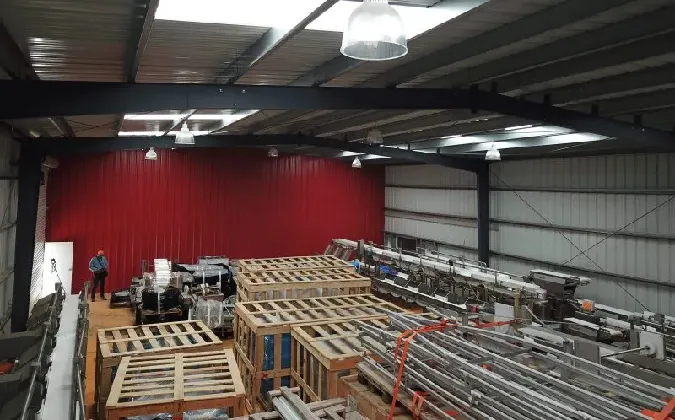- Afrikaans
- Albanian
- Amharic
- Arabic
- Armenian
- Azerbaijani
- Basque
- Belarusian
- Bengali
- Bosnian
- Bulgarian
- Catalan
- Cebuano
- Corsican
- Croatian
- Czech
- Danish
- Dutch
- English
- Esperanto
- Estonian
- Finnish
- French
- Frisian
- Galician
- Georgian
- German
- Greek
- Gujarati
- Haitian Creole
- hausa
- hawaiian
- Hebrew
- Hindi
- Miao
- Hungarian
- Icelandic
- igbo
- Indonesian
- irish
- Italian
- Japanese
- Javanese
- Kannada
- kazakh
- Khmer
- Rwandese
- Korean
- Kurdish
- Kyrgyz
- Lao
- Latin
- Latvian
- Lithuanian
- Luxembourgish
- Macedonian
- Malgashi
- Malay
- Malayalam
- Maltese
- Maori
- Marathi
- Mongolian
- Myanmar
- Nepali
- Norwegian
- Norwegian
- Occitan
- Pashto
- Persian
- Polish
- Portuguese
- Punjabi
- Romanian
- Russian
- Samoan
- Scottish Gaelic
- Serbian
- Sesotho
- Shona
- Sindhi
- Sinhala
- Slovak
- Slovenian
- Somali
- Spanish
- Sundanese
- Swahili
- Swedish
- Tagalog
- Tajik
- Tamil
- Tatar
- Telugu
- Thai
- Turkish
- Turkmen
- Ukrainian
- Urdu
- Uighur
- Uzbek
- Vietnamese
- Welsh
- Bantu
- Yiddish
- Yoruba
- Zulu
Oct . 06, 2024 12:12 Back to list
The Advantages of Light Gauge Steel Frame Structures
In the realm of modern construction, the choice of materials is crucial in determining the efficiency, durability, and sustainability of a building. One material that has gained significant traction in recent years is light gauge steel. Light gauge steel frame structures offer numerous advantages that make them an appealing choice for both residential and commercial projects. This article delves into the various benefits, applications, and considerations associated with using light gauge steel in construction.
What is Light Gauge Steel?
Light gauge steel refers to structural steel pieces that are thin and light, typically less than 3/16 inches in thickness. Manufactured through cold-formed processes, light gauge steel is designed to be used in framing applications. These steel components include studs, tracks, and joists and are engineered to provide high strength while minimizing weight.
Advantages of Light Gauge Steel Frame Structures
1. Durability and Longevity One of the primary benefits of light gauge steel is its exceptional durability. Steel is resistant to many environmental challenges, including moisture, pests, and fire. Unlike wood, steel does not warp, crack, or split over time, thereby ensuring that structures remain sound for decades. This longevity reduces maintenance costs and increases the investment's overall value.
2. Sustainability The push towards sustainable building practices has led to increased interest in materials that can be recycled and reused. Light gauge steel is 100% recyclable, meaning that at the end of a building’s life cycle, the steel can be reclaimed and repurposed. Additionally, the production of steel has become more efficient, with many manufacturers adopting green practices to minimize their carbon footprint.
3. Design Flexibility Light gauge steel frame structures allow for a high degree of design versatility. Architects and builders can easily customize layouts, adapt to different architectural styles, and incorporate unique design features without compromising structural integrity. This flexibility is particularly beneficial for modern designs that often include open floor plans and large spans.
4. Speed of Construction The use of light gauge steel can significantly expedite the construction process. The prefabrication of steel components leads to quicker assembly on-site. With reduced construction time, projects can be completed faster, allowing for earlier occupancy and a quicker return on investment.
light gauge steel frame structure

5. Cost-Effectiveness While the initial material cost for light gauge steel may be higher than traditional materials like wood, the long-term savings can be substantial. The durability of steel minimizes maintenance and repair costs, while its structural properties can result in lower foundation and framing expenses. Additionally, the speed of construction can lead to overall savings in labor costs.
6. Resistance to Natural Disasters Light gauge steel structures are inherently strong and are particularly well-suited to withstand natural disasters such as earthquakes and hurricanes. Their lightweight but robust nature means they can absorb and dissipate energy effectively, reducing the risk of collapse during severe weather events.
Applications of Light Gauge Steel
The versatility of light gauge steel makes it suitable for a wide range of applications. From residential homes, multi-family housing, and commercial buildings to schools and industrial facilities, the use of light gauge steel spans various sectors. It is particularly popular in regions prone to environmental challenges where resilience and durability are paramount.
Considerations
While light gauge steel offers many benefits, there are considerations that builders must keep in mind. Proper design and engineering are essential to ensure adequate load-bearing capabilities and structural stability. Additionally, while steel is resistant to many forms of damage, it can be susceptible to corrosion if not correctly treated or protected, especially in coastal areas.
Conclusion
In conclusion, light gauge steel frame structures present an innovative and effective alternative to traditional building materials. With advantages such as durability, sustainability, design flexibility, speed of construction, and cost-effectiveness, it is no wonder that this construction method is gaining popularity. As the construction industry continues to evolve, light gauge steel will likely play a pivotal role in shaping the buildings of the future, embodying resilience and environmental responsibility while meeting the demands of diverse architectural visions.
-
How Do Prefabricated Steel Structures Transform Modern Construction?
NewsJul.14,2025
-
How Do Prefabricated Metal Buildings Redefine Modern Construction?
NewsJul.14,2025
-
How Do Prefab Insulated Metal Buildings and Steel Structures Revolutionize Modern Construction?
NewsJul.14,2025
-
How Do Pre - Engineered Steel Structures Redefine Modern Construction?
NewsJul.14,2025
-
Advancing Modular Construction with Prefabricated Metal Structures
NewsJul.14,2025
-
Advancing Industrial Infrastructure with Prefabricated Steel Solutions
NewsJul.14,2025
Products categories
Our Latest News
We have a professional design team and an excellent production and construction team.












